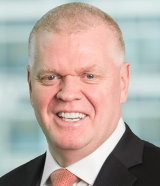The ousting of John Flint as HSBC’s chief executive in August was always likely to presage a more intense focus on the performance of the firm’s global banking and markets division.
|
Noel Quinn |
And, so it has proved with the release of the bank’s third-quarter earnings, in which interim CEO Noel Quinn described the performance of parts of GBM as “unacceptable” and unlikely to improve without “decisive action”.
GBM has long been a thorny problem for the bank, not because it has performed universally badly – it hasn’t, and Asia continues to be a strong area for the firm. But for years the broader franchise has failed to live up to the potential that a bank with the geographic reach and product scope of HSBC should have been able to achieve.
The decisive action? The detail will come when the bank reports full-year earnings: CFO Ewen Stevenson concedes that management was, for now, being deliberately vague.
Reduce but retain
But first, the bank will be reducing the capital allocated to the lowest returning of its US and continental European businesses, although it stresses that it would retain a global presence.
The cost base will be reduced. The organizational structure will also be changed.
Quinn notes that the firm’s complexity had been an obstacle to its plans: not for nothing do rivals joke that HSBC stands for “How Simple Became Complicated”.
A 15% year-on-year drop in GBM revenues was mostly driven by the performance of its global markets business, says Stevenson. Given conditions, that’s hardly a surprise. And while HSBC has been better at doing more with less than some rivals, particularly in equities, in future it will have to do this with even less.
The scale of the task is clearly great: Stevenson says that the bulk of the restructuring of the firm would take two years. But could this finally be the rejig that HSBC has needed in GBM?
The bank has new management in the US and at the top of its global markets business. It is at last setting out a plan for more focus, something that it sometimes appeared to resist, even when most rivals had already long accepted the need for it.
Quinn talks of the need to retain a global wholesale footprint that is aimed at serving the largest multinationals on the one hand and the entrepreneur-owned mid-market on the other. It ought to work. Get the capital allocation right, and it just might.


 Signal2forex.com - Best Forex robots and signals
Signal2forex.com - Best Forex robots and signals




